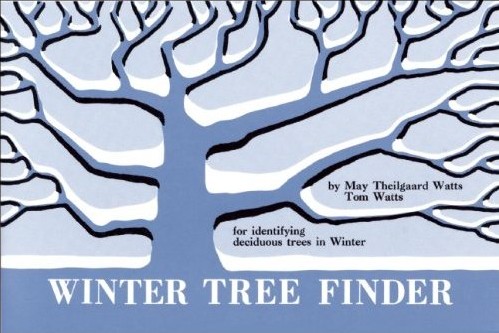
On my walks through Schenley Park I’ve started to notice the trees again. Not that they’ve been missing — far from it! — but ever since the songbirds arrived last spring the trees were mere bird accessories, places for birds to find food, nest and perch.
Now the migratory songbirds have left and the deciduous trees have gone through a great transformation. They’ve dropped their leaves and seeds and stripped down to trunks and twigs. They’re easier to see and they’re easier to identify.
Back in the 1990’s I took a class on winter tree identification at Chatham University’s Rachel Carson Institute where I learned that twigs and bark tell you almost all you need to know to identify a species. In class we used the booklet pictured above, the Winter Tree Finder by May Thielgard Watts and Tom Watts. It’s easy to carry and contains a step by step key for identifying twigs, much like Newcombs Wildflower Guide does for flowers.
In late October when I noticed the trees again, I got excited and took my Winter Tree Finder to Schenley Park. Soon I began taking pictures of bark and twigs. It didn’t take long before I’d dreamed up a Wednesday series on Winter Trees.
Today is the first entry but it’s just an introduction. Before I start showing you the trees next week you may want to do two things:
- First, familiarize yourself with the anatomy of a twig (shown below). I’ll be using the terms highlighted on this illustration from Clemson University. Click on the twig picture to read the definitions and learn more.
- Second, you may want to get your hands on the Winter Tree Finder so you can explore for yourself. (You can buy it on Amazon by clicking on the book cover above.)
Next Wednesday I’ll show you the first tree in the series, all of which grow in southwestern Pennsylvania. I know they do because I found all of them in Schenley Park.
(Cover of Winter Tree Finder from Amazon.com. Image of twig anatomy linked from Clemson University’s Familiar Trees of South Carolina)
Thanks so much for introducing us to the pocket guide. This one and its companion for trees that are in leaf will make a great Christmas present for a friend who is trying to learn tree identification skills.